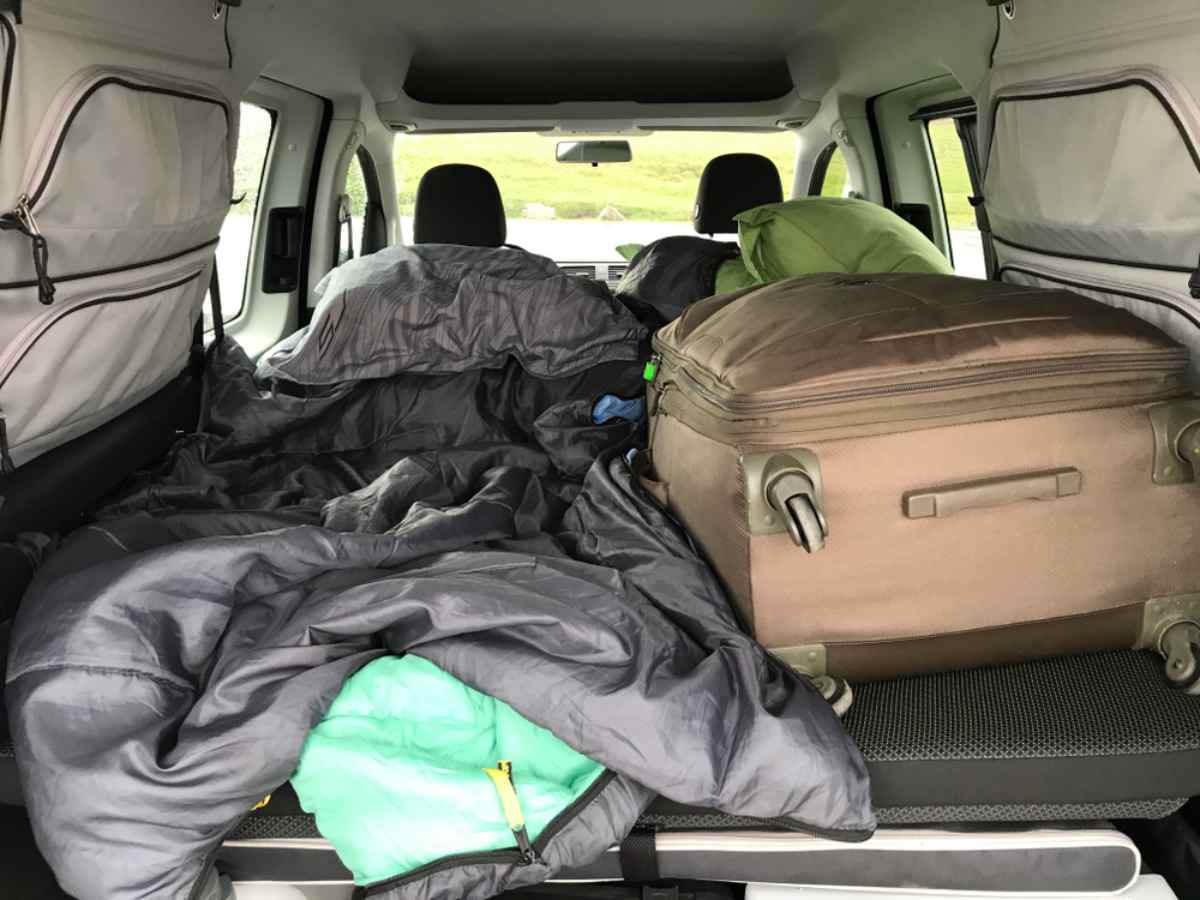Thinking about RV camping in Iceland? Good. You should be. It's the only way to wake up near waterfalls, outrun tour buses, and skip hotel check-out times entirely. This guide is for travelers who’d rather chase fog than wait in line for waffles.
We’ll cover the boring, but important legal stuff, the costs, when to go, where to park, what to pack, and how not to freeze. It’s not a luxury. It’s better. And yes, first-timers survive just fine. You don’t need mad off-road skills either. You just need common sense, warm socks, and some guts.
Why Choose RV Camping in Iceland?
We can give you a hundred reasons why you should rent an RV in Iceland. But, for the most part, here are the most important reasons:
Freedom to Explore Beyond Hotels
Motorhome camping in Iceland means no reception desks, no checkout nags, and no tour bus agendas. You move when you want. You stop where it feels right. You sleep where the view wins.
- Hotels don’t sit beside craters or black sand beaches. Your camper can.
- Share a firepit, trade road tips, or borrow a gas can from the van next door. The campsite crowd gets it.
- Chase the weather. If it’s raining in the east, drive west. Simple.
- Skip the rigid bookings. Campgrounds here are chill, well-kept, and scattered across the country.
- It’s not just travel. It’s permission to disappear on your own terms.

Cost Savings Compared to Hotels + Car Rental
RV camping in Iceland doesn’t just feel freer. It actually costs less. If you're smart about it, you'll save without missing a thing.
- One daily bill covers both your bed and your wheels.
- Two people spend around $310 per day in a camper. Car plus hotel? Closer to $330.
- A single restaurant meal runs 20 to 35 USD.
- Stock up at Bónus or Krónan. Cook in your kitchenette for half that.
- No overpriced breakfast buffets. No parking fees outside hotels. Just you and the road.
A Unique Way to Experience Icelandic Nature
Iceland isn’t meant to be watched through a windshield or rushed between tour stops. It’s meant to be lived in. RV camping drops you straight into it.
- Camp beside Sólheimajökull and hear the ice shift overnight. That sound sticks.
- Watch the Northern Lights curl above your van near Skagafjörður with no crowd, no engine noise, no streetlamp glow.
- Hit Kirkjufell before anyone else. It’s packed by 10 a.m. in summer.
- Stay late at Jökulsárlón. When the buses leave, the seals show up.
- You don’t just visit nature this way. You sleep in the middle of it.
Is RV Camping Legal in Iceland?
Wild camping in Iceland used to be the norm. Park where you wanted, sleep where it felt right. That window's closed. The rules are stricter now, and the fines aren’t small. Here’s what you need to know to keep things legal and avoid awkward chats with uniformed strangers.
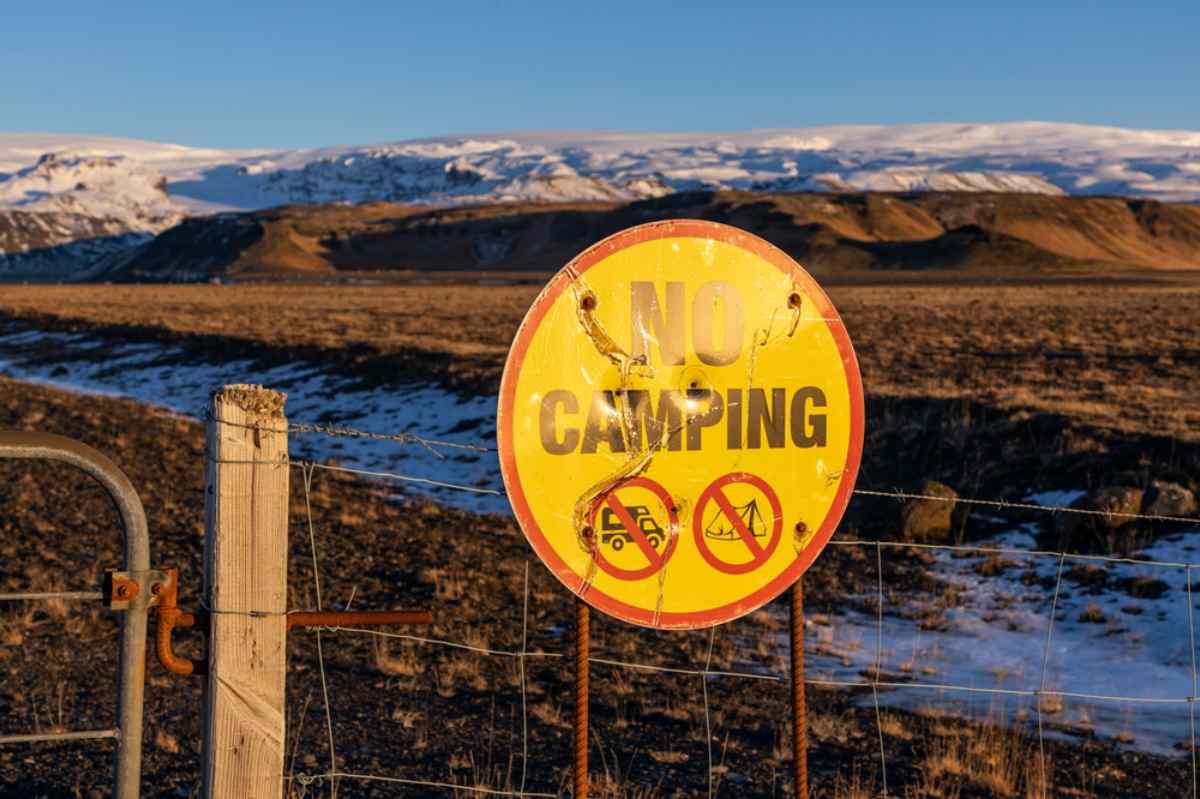
The Rules on Wild Camping
Since 2015, wild camping in Iceland isn’t just frowned on. It’s flat-out illegal. No, you can’t park your van wherever the view looks good. Not without the landowner’s blessing. One set of tires can trash moss that took a century to grow. That’s why the rules exist. Here are some camping rules you should know:
- Tent camping? Still legal in remote spots, but just for one night and far from homes or campsites.
- See a ‘no camping’ sign? It means exactly that, even with a tent.
- In the Highlands or along F-roads, official campsites are your only legal option.
Official Campsites vs. Free Spots
If you’re asking where to park your campervan in Iceland, the answer’s simple: official campsites. They’re legal, they’re everywhere, and they’ve got what you need.
- Think hot showers, toilets, hookups, even the odd hot tub if you’re lucky.
- Back in the day, ‘free spots’ meant quiet pull-offs or gravel patches with a view. That freedom’s gone.
- Today’s gray zones include farm driveways, picnic areas, and random car parks. Looks fine until it isn’t.
- Iceland’s campsites aren’t just safer. They keep you part of the solution, not the problem.
Fines and Penalties to Avoid
RV camping in Iceland isn’t a game of ‘let’s see what we can get away with.’ Get caught parking where you shouldn’t or driving off-road, and you’re looking at a fine between 20,000 and 400,000 ISK.
That’s up to 2,800 USD gone before breakfast. Cops, rangers, and local wardens aren’t guessing. They know the spots people push their luck, and they check them often. Use SafeTravel.is and Umferdin.is if you don’t feel like gambling with your trip fund.
Get fined? No arguing. No negotiating. You’ll pay online or walk into the nearest station. Iceland doesn’t do warnings.
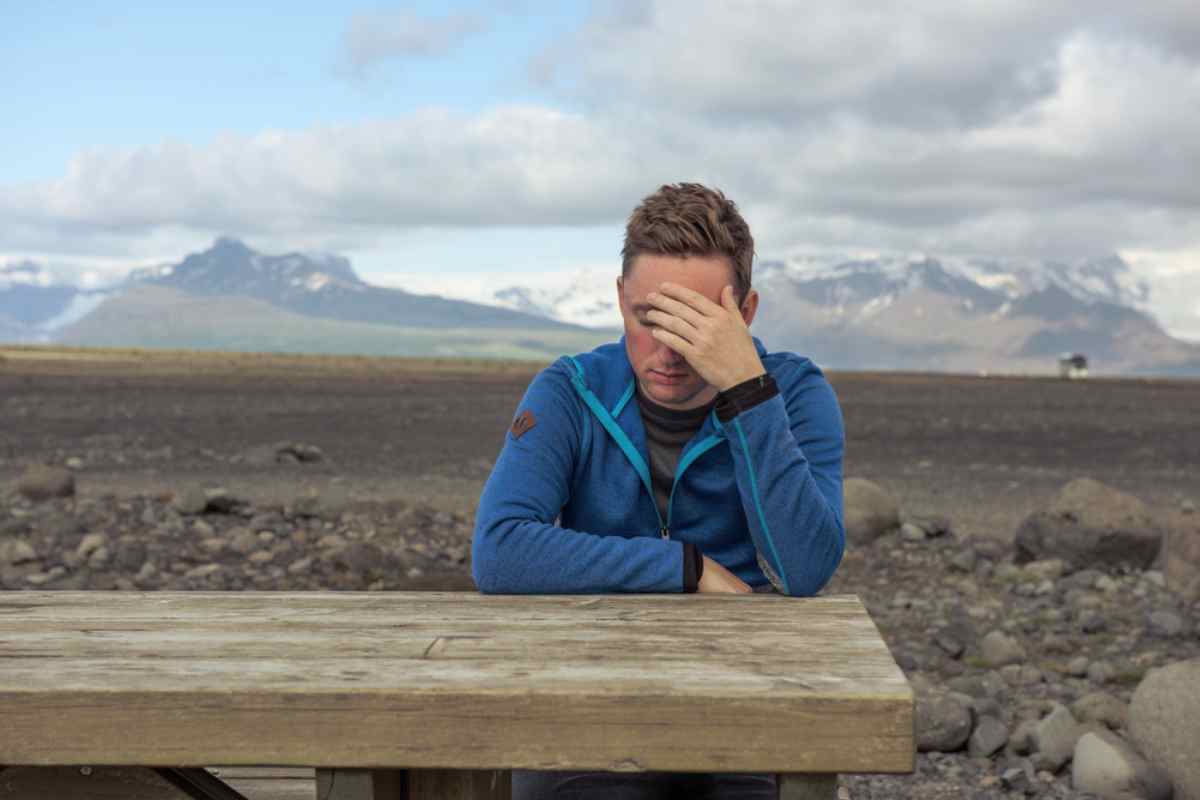
Best RV Campsites in Iceland (By Region & Traveler Type)
Iceland has around 200 campsites. Some are incredible. Some are just fields with a bin. Knowing where to stop, what’s open, and which ones are worth your money shouldn’t be guesswork. But it often is. Let’s fix that.
South Iceland
This stretch is tourist central for a reason. Skógafoss drops 60 meters (197 feet) like it’s showing off. Vík brings the black sand drama. And Þórsmörk waits at the end of a dirt road that dares you to hike.
South Iceland’s RV campsites are loaded with what matters. Toilets that work. Showers that stay hot. Cooking shelters that don’t leak. Some even throw in Wi-Fi. Skógar and a few near Vík stay open year-round.
The rest open April to September. In summer, spots go fast. Book ahead or gamble. Some campsites don’t take reservations, but those fill up before you’ve boiled your coffee.
North Iceland
Motorhome camping in Iceland gets really quiet up here. No tour buses. No packed parking lots. Just steam, silence, and the occasional whale. Base yourself near Lake Mývatn if you like hot springs and landscapes that look like Mars.
Vogar stays open year-round with heated indoor spots that don’t smell like damp socks. Hlíð Camping and others near Akureyri open June to October. Hamrar is the big one in town. Awesome setup. Washing machines, children's playground, bathrooms, etc. You name it.. Want the Northern Lights?

Late September to April is your window. The skies go dark, the people disappear, and suddenly it’s just you and the show.
East Fjords
RV camping in Iceland doesn’t get more off-radar than the East Fjords. It’s all steep cliffs, misty roads, and fishing villages that feel like they’ve hit pause. Seydisfjordur, Borgarfjordur Eystri, and Reyðarfjörður are the kind of places you drive into and instantly shut up.
Campsites here keep it basic. No spa. No Instagram signs. Just the essentials and views that don't need filters. Roads are fine if you stay smart, but a few gravel turns will test your focus. Hit this region in summer. Fewer crowds, more sky.
West Iceland & Snæfellsnes Peninsula
Motorhome camping in Iceland hits a sweet spot here. Snæfellsnes feels like the whole country got crammed into one stretch of land. Glacier-topped volcano? Check. Lava fields?
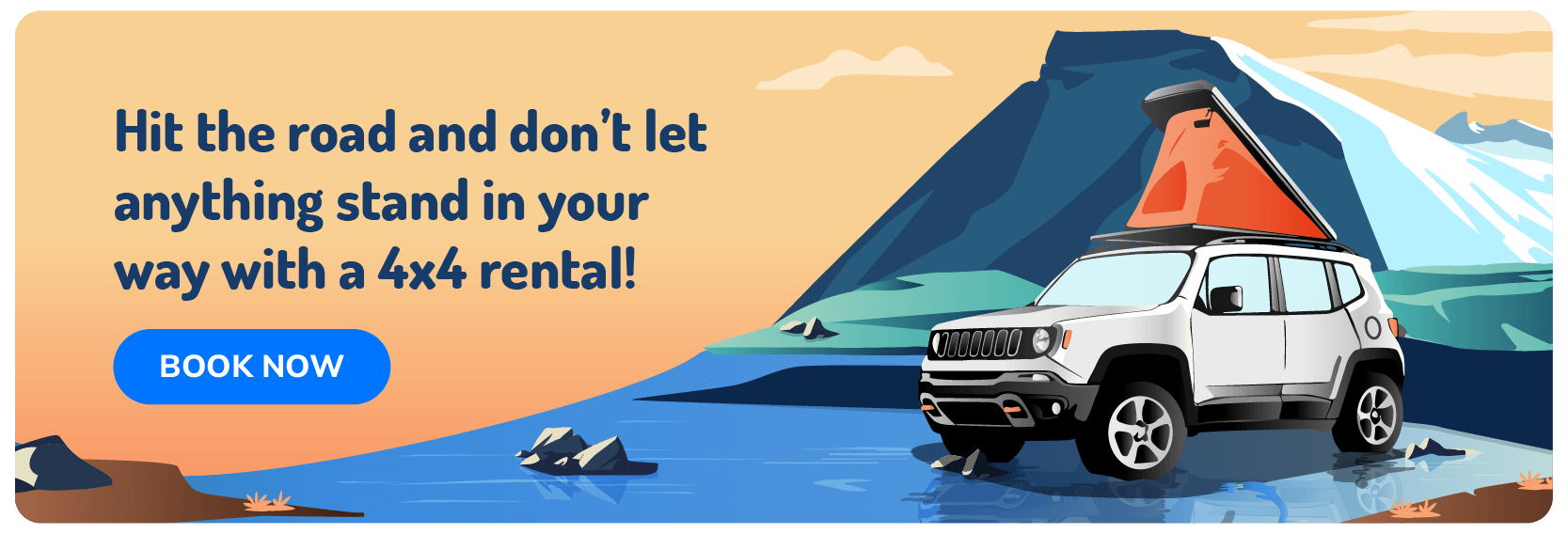
Everywhere. Kirkjufell? Yeah, the over-photographed one. Worth it anyway. Arnarstapi and Hellnar still look like fishing villages, not film sets. Campsites in Grundarfjörður and Ólafsvík keep things simple and sustainable, close to what matters.
Roads are solid year-round. You don’t have to overthink this region. Just show up, park smart, and let the landscape do what it does. This is Iceland without the lines or the stress.
Reykjavík & Golden Circle
If you’re starting or ending your Ring Road camping trip, this is where you reset. Reykjavík gives you grocery stores, rental returns, and actual pavement under your boots.
Campsites like Reykjavik Campsite sit close to the action without the chaos. Out near Gullfoss and Geysir, Skjól and Úthlíð keep it practical with kitchens, showers, and Wi-Fi that mostly works.
Parking in the city isn’t a free-for-all. Zones change, rules shift, and fines land fast. Use Parka or risk paying in regret. Þingvellir is just down the road. City one day, tectonic rift the next.
Family-Friendly vs. Remote Wilderness Campsites
Some campsites are built for comfort. Árbær has showers that work, kitchens that don’t smell like burnt sausages, and a playground to wear the kids out.
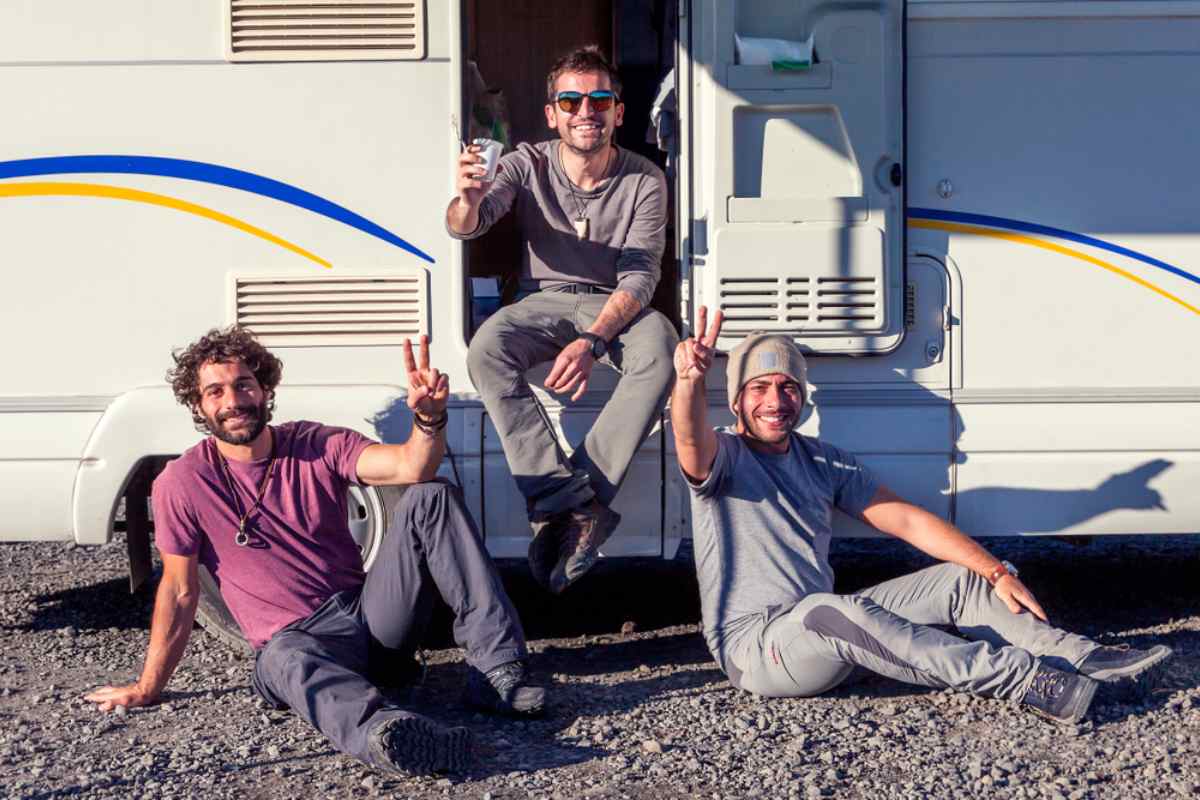
It’s close to groceries, close to attractions, and close to sanity if you’re traveling with family. Then there’s the no-frills option. A toilet, if you’re lucky. No neighbors. No lights. Just wind, rocks, and whatever you brought with you.
These spots don’t care if your kid needs Wi-Fi or your back needs a mattress. Choose based on who’s in the van and how much discomfort they can take without starting a mutiny.
RV Camping Seasons: When to Go
Here’s what you need to know to pick your window and not regret it later. Keep reading, especially if you think winter sounds like a fun idea.
Summer (June-August): Long Days, Peak Season
This is Iceland’s no-curfew season. Sun barely sets, sleep gets weird, and you can hike at 2 a.m. just because you feel like it. Great for long drives and late-night views.
Not great if you forgot to book campsites. In summer, the good ones fill fast. Plan ahead or enjoy the parking lot behind a gas station. Up north, the midges are relentless. Tiny, winged nightmares.
Avoid still water, wear a net, and don’t leave the repellent behind. Summer gives you time to see everything. It also gives bugs time to find you. Tradeoffs. Always tradeoffs.
Spring & Fall
Motorhome camping in Iceland during spring or fall is for travelers who’d rather trade noise for stillness and skip the peak-season scramble. Late May to June and September to early October hit that sweet spot.
Fewer people, lower costs, and landscapes that actually change color. Days are still long enough to cover ground, just not forever like in summer. Snow can sneak in early or hang on late, so prep for surprise flurries.
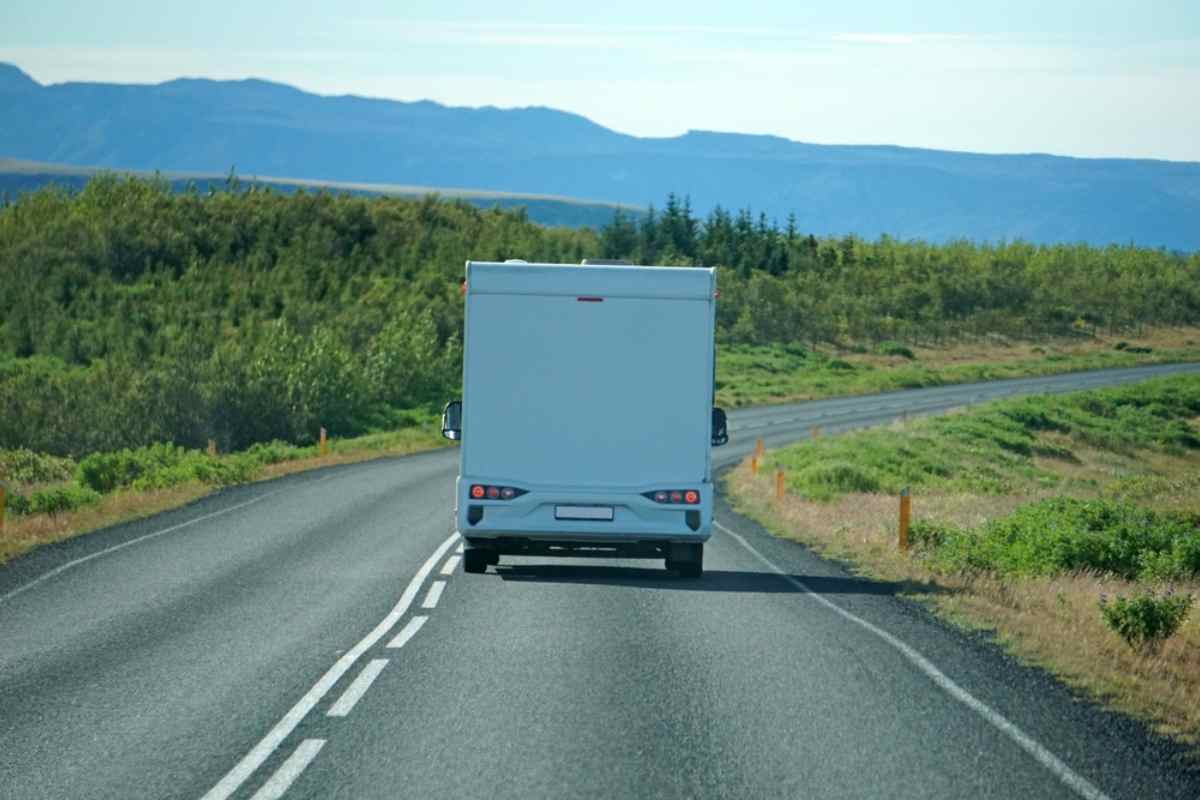
Bring layers you can trust, not ones that look good in photos. Plan tighter. Drive slower. This is the calm between the storms. Use it well.
Winter Camping: Challenges and Safety Precautions
Winter camping in Iceland is not a test run. It’s cold, dark, and beautiful in ways that don’t show up on postcards. You’ll need proper heating, either built-in or portable, that actually works.
Most campsites in the Highlands are shut tight. Stick to the lowlands or near towns where you can find basic facilities. Roads get slick fast. Ice, snow, and sudden whiteouts are common.
Daylight lasts four to six hours, depending on the month, so your timing needs to be sharp. The tradeoff? Northern Lights from your camper window. If you like your comfort predictable, skip it. If not, go.
Costs of RV Camping in Iceland
Iceland isn’t cheap, but RV camping keeps things in check if you do it right. That doesn’t mean it’s budget travel. It means you’re not bleeding cash on hotels and restaurant menus. The real costs hide in fuel, food, and those tiny campsite extras that add up fast. Here’s what you need to plan smart and spend where it counts.
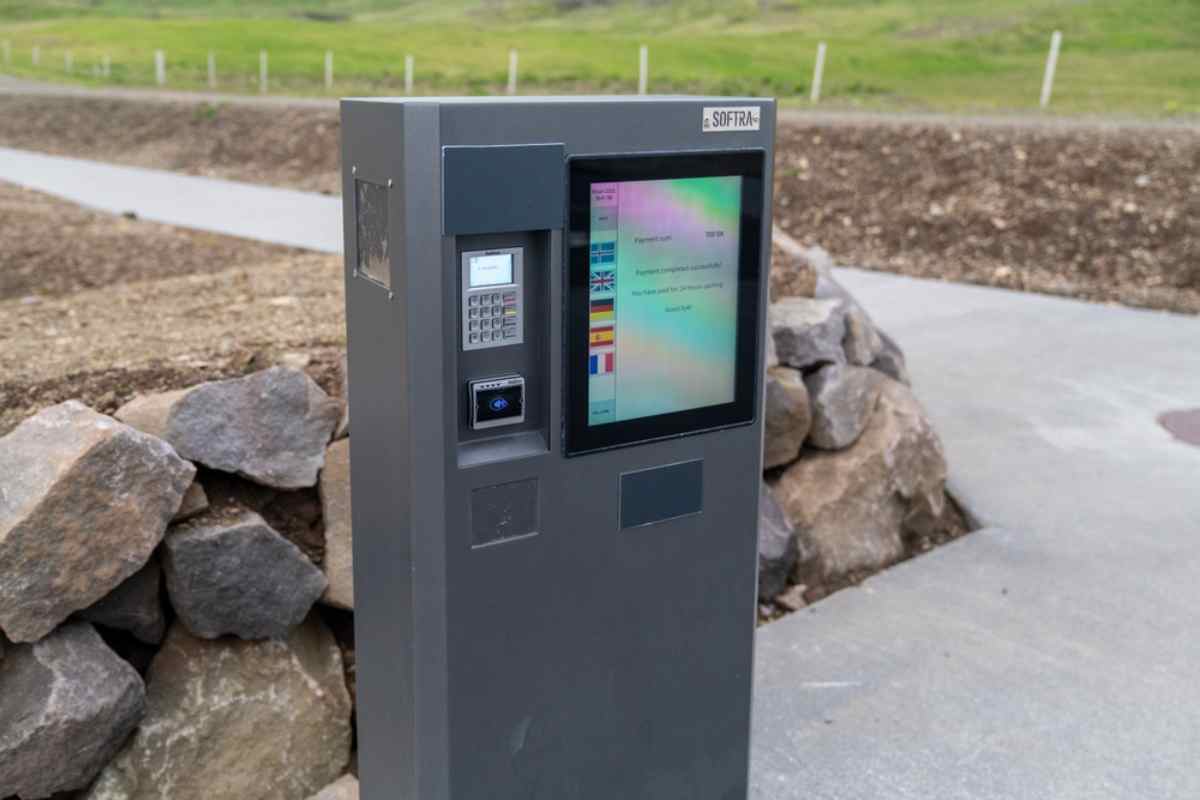
Campsite Fees
One of the best RV travel tips in Iceland? Don’t let campsite fees sneak up on you. Most charge around $10 to $20 per night per van. Some go by person, so two people can end up paying $20 to $40 nightly.
Do that for 10 nights and you’re out $100 to $400 fast. If you're on the road for longer than a week, grab the Camping Card. It costs about $187 and gives access to over 40 sites. It pays for itself quickly if you plan to stay moving.
Gasoline & Driving Costs
Gas in Iceland isn’t a joke. At around $2.25 per liter, every detour has a price. Most vans get 10 to 15 kilometers per liter, which means driving the full 1,300 km Ring Road burns through 100 to 130 liters. That’s roughly $225 to $300 just in fuel. Want to save?
Get a smaller or diesel camper. They burn slower. Plan your route so you’re not doubling back for a missed waterfall. And always fill up in towns. Remote pumps love charging extra just because they can. Fuel adds up fast out here, especially if you’re chasing the horizon.
Food, Water, and Utilities
Groceries in Iceland won’t bankrupt you, but they won’t feel like a win either. Bread runs $2 to $3, milk is around $1.50 to $2, and chicken hits $10 to $15 per kilo. For two people, expect to spend $15 to $25 a day if you’re cooking smart.
That’s $150 to $250 over a 10-day trip. Water’s free almost everywhere, so refill at campsites or gas stations and skip the bottled stuff. Cook in the van, shop at Bónus, and don’t wait until you're starving to plan meals.

Example Daily Budgets
Not all RV travelers spend the same. Some live off oatmeal and free views. Others need campsite hookups and hot showers twice a day. Here’s how it breaks down:
- Minimalist - $100 to $130 per day. Camp at the cheapest sites. Cook all meals. Skip tours. Fuel: $25. Food: $20. Camp: $15. Extras: $10.
- Average - $150 to $180 per day. Mix of paid campsites and occasional splurges.
Fuel: $30. Food: $30. Camp: $25. Extras: $20. - Splurger - $200 to $250+ per day. Premium camper, pricier campsites, paid activities. Fuel: $40. Food: $40. Camp: $35. Extras: $50+.
RV Camping Essentials & Tips
Here are some RV travel tips about what you need to pack, prep, and actually know before hitting the road. Skip this part and you’ll learn the hard way.
Must-Pack Gear for RV Travelers
Pack light, but don’t pack stupid. Here’s what you actually need:
Safety first
- First-aid kit with basics that matter
- Reflective vests for roadside stops or poor visibility
- Cooking and comfort gear
- Portable stove or cookset that actually works
- Headlamp or lantern for late-night cooking
- USB chargers and power banks
- Leveling blocks so you’re not sleeping at a tilt
Iceland-specific essentials
- Fully waterproof clothing, not “water-resistant” marketing
- Midges net for sanity near lakes
- Window insulation for cold nights
Included with us
- Winter tires at no extra cost
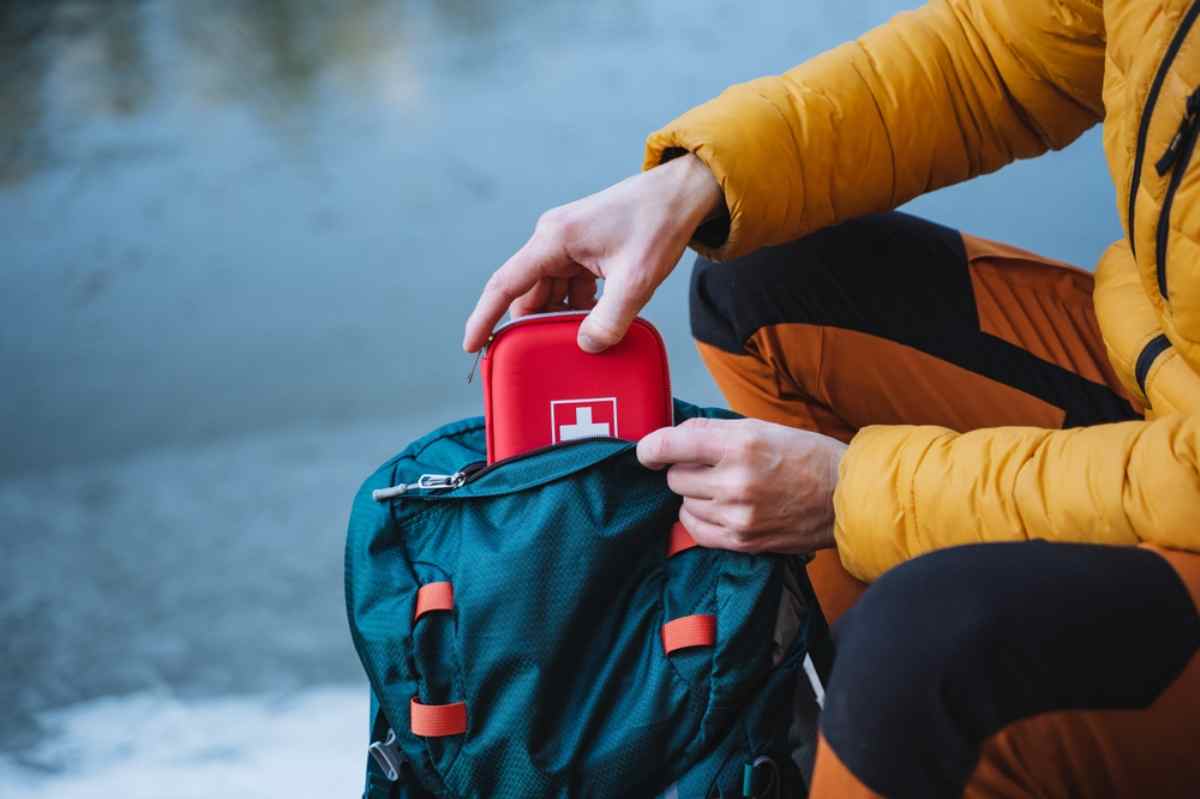
Driving & Safety Tips for Iceland’s Roads
Here’s what you need to know before the road teaches you the hard way. Read this part twice. It matters.
Staying Warm and Comfortable at Night
Nights in Iceland can drop to 0°C (32°F) even in summer. If you’re not ready, you’ll feel it in your bones. Here’s how to sleep without shivering:
Heating systems
- Most campers come with gas, diesel, or electric heaters
- Know how to use it before you're stuck in the dark
- Keep a backup heat source if you're heading into colder regions
Clothing and bedding
- Layer up with thermal base layers and wool socks
- Don’t rely on one thick blanket. Layers trap heat better
Ventilation and insulation
- Crack a window slightly to avoid condensation
- Use insulated window covers to keep warmth in and cold out
Waste Disposal and Environmental Responsibility
RV camping in Iceland comes with freedom, but also with rules. Dump your waste in the wrong place and you’re part of the problem. Black and gray water must go into marked stations. No exceptions.
Trash? Pack it out or use the bins at campsites. They’re clearly marked, so no excuses. Don’t tear up moss, pick rocks, or light fires wherever you feel like it. Iceland’s ecosystems don’t bounce back fast. So, please leave no trace.

Suggested RV Camping Itineraries
Here are some cool itinerary ideas you need to map out instead of wasting your fuel on random stops. Let’s get into it.
5-Day Golden Circle + South Coast Itinerary
This loop hits the classics without rushing the magic.
- Day 1 -Start in Reykjavik. Drive 50 minutes to Þingvellir and walk the rift between tectonic plates. Move on to the Geysir geothermal area, another 50 minutes. Watch the earth boil, then push 10 more minutes to Gullfoss. End your day near Selfoss or Hella.
- Day 2 - Head south. Seljalandsfoss is 1.5 hours out. Skógafoss is 30 minutes further. Wrap the day at Reynisfjara’s black sand beach near Vík. Camp in Vík.
- Day 3 -Drive east. Fjaðrárgljúfur canyon in an hour, Jökulsárlón glacier lagoon in two more. Overnight near Höfn or the glacier.
- Day 4 - Loop back west. Stop wherever you missed or wanted more time. Camp near Selfoss or Reykjavik.
- Day 5 - Easy day. Explore Reykjavik or soak at the Blue Lagoon near Keflavík, 45 minutes out.
7-Day Ring Road Itinerary
Ring Road camping over seven days means one full loop, no wasted motion. You get coastlines, waterfalls, lava fields, and just enough time to breathe between them. Here’s how to break it down without burning out.
- Day 1 - Reykjavik to Vík. Drive 2.5 to 3 hours with stops at Seljalandsfoss, Skógafoss, and Reynisfjara’s black sand. Camp in Vík.
- Day 2 - Vík to Höfn. About 3 to 4 hours. Hit Fjaðrárgljúfur canyon and Jökulsárlón glacier lagoon. Sleep near the glacier or in Höfn.
- Day 3 - Höfn to Egilsstaðir. Around 3.5 hours through East Fjords. Detour to Seyðisfjörður if you want quiet beauty with a view.
- Day 4 - Egilsstaðir to Lake Mývatn. Drive 2.5 hours. Explore Hverir’s mud pools and Dimmuborgir’s lava maze.
- Day 5 - Mývatn to Akureyri. Easy day at 1.5 hours. Detour to Dettifoss if you want raw power and wet shoes.
- Day 6 - Akureyri to West Iceland. 4 to 5 hours. Stop at Hraunfossar and Barnafoss on the way. Camp in Reykholt.
- Day 7 - Back to Reykjavik in 2.5 hours. Stop in Borgarnes or sneak a quick visit to Kirkjufell if time allows.
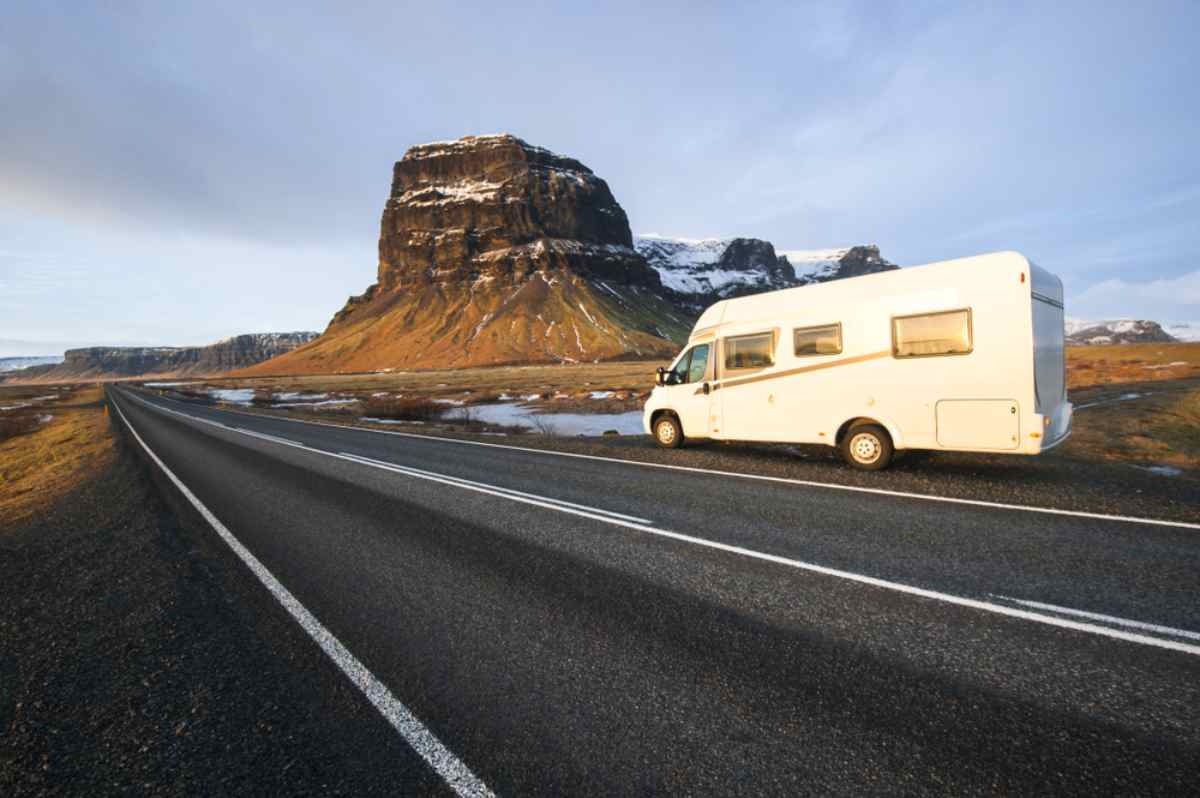
10-14 Day Full Iceland Adventure
Got two weeks and a 4x4 camper? Excellent. You’re ready for the long route. This itinerary hits the full Ring Road, throws in the Highlands, and still gives you time to breathe. Here’s how 10-14 days pans out:
- Day 1 - Land in Reykjavik, grab your camper, see a few city highlights, camp nearby.
- Day 2 - Golden Circle loop: Þingvellir, Geysir, Gullfoss, sleep near Selfoss or Hella.
- Day 3 - Take the F-roads to Landmannalaugar, hike a bit, soak in the hot springs, camp there.
- Day 4 - More trails in Landmannalaugar, then head out toward Hella or Hvolsvöllur for the night.
- Day 5 - Classic South Coast run: Seljalandsfoss, Skógafoss, and Reynisfjara beach, stay in Vík.
- Day 6 - Push east to Jökulsárlón and Skaftafell National Park, overnight near Höfn.
- Day 7 - Cruise the East Fjords toward Egilsstaðir, and sleep at Egilsstaðir campsite.
- Day 8 - Visit Dettifoss, then slow down at Lake Mývatn for mud pools and volcanic weirdness.
- Day 9 - Optional whale tour in Húsavík, then drift toward Akureyri for the night
- Day 10 - Head west, see Hraunfossar, Barnafoss, and Deildartunguhver, and sleep near Borgarnes.
- Days 11-13 - Explore the Snæfellsnes Peninsula: Kirkjufell, lava fields, Snæfellsjökull National Park, and camp near Stykkishólmu.
- Day 14 - Back to Reykjavik. Park. Breathe. Get ready to leave, even though you won't want to.
FAQs About RV Camping in Iceland
Can I park anywhere overnight?
No. Wild camping in a vehicle is illegal without landowner permission. Stick to official campsites unless you enjoy fines and awkward wake-up calls. Details are up in the legal section.
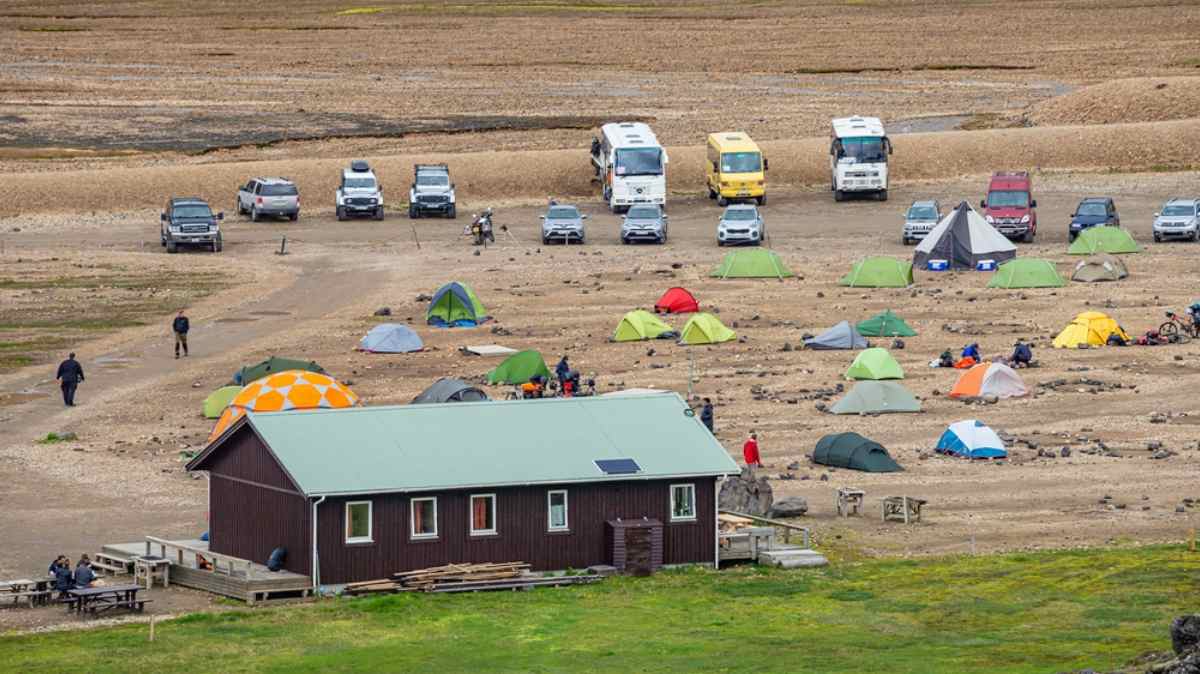
Are campsites open year-round?
Some are. Many shut down from late September to May. In winter, your best bet is sticking to the southwest or near towns. Always check ahead so you’re not stranded.
Do campsites have showers and electricity?
Most do, but don’t count on it everywhere. Smaller or remote sites may be limited. Bring a big power bank as well, just in case.
What size RV is best for Iceland’s roads?
Smaller campers handle narrow roads and wind better. Motorhomes are comfier inside but harder to maneuver. If you're new to this, go smaller and thank yourself later.
Making the Most of RV Camping in Iceland
RV camping in Iceland gives you freedom, nature, and fewer bills to cry over. You park where the views are the best and sleep where it’s quiet enough to matter.
Just follow the rules, respect the land, and don’t learn the hard way what ‘closed road’ means. Want to do this right? Check out our RV rental guide, packing list, and weather tips before you even pack socks.
